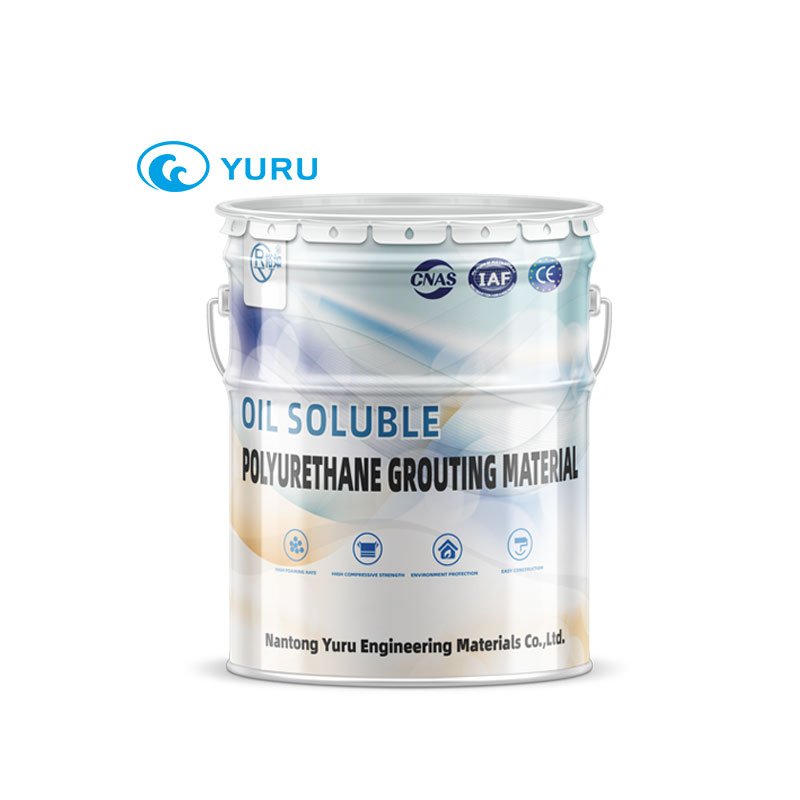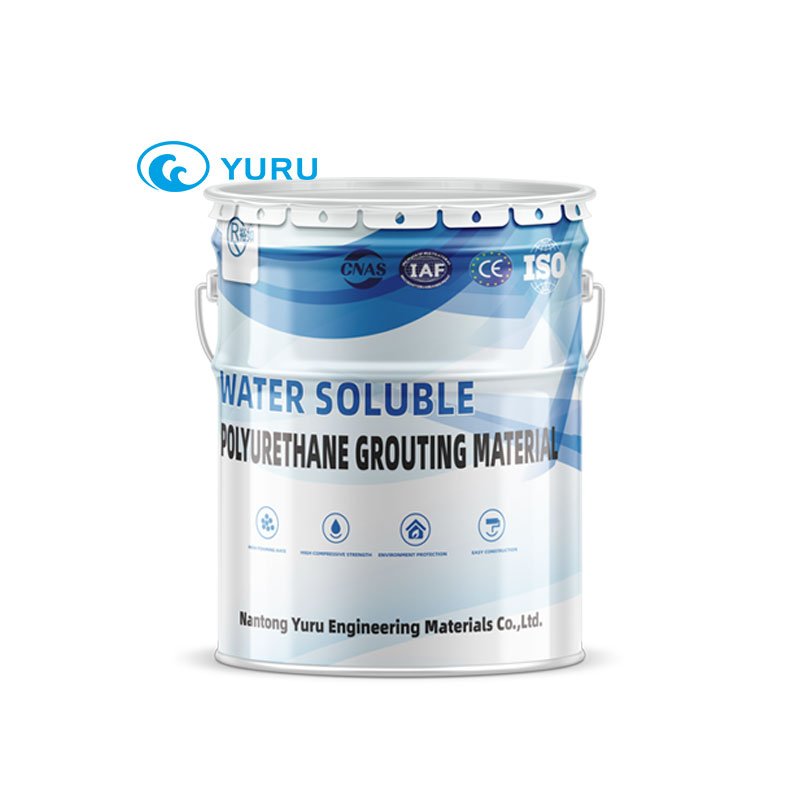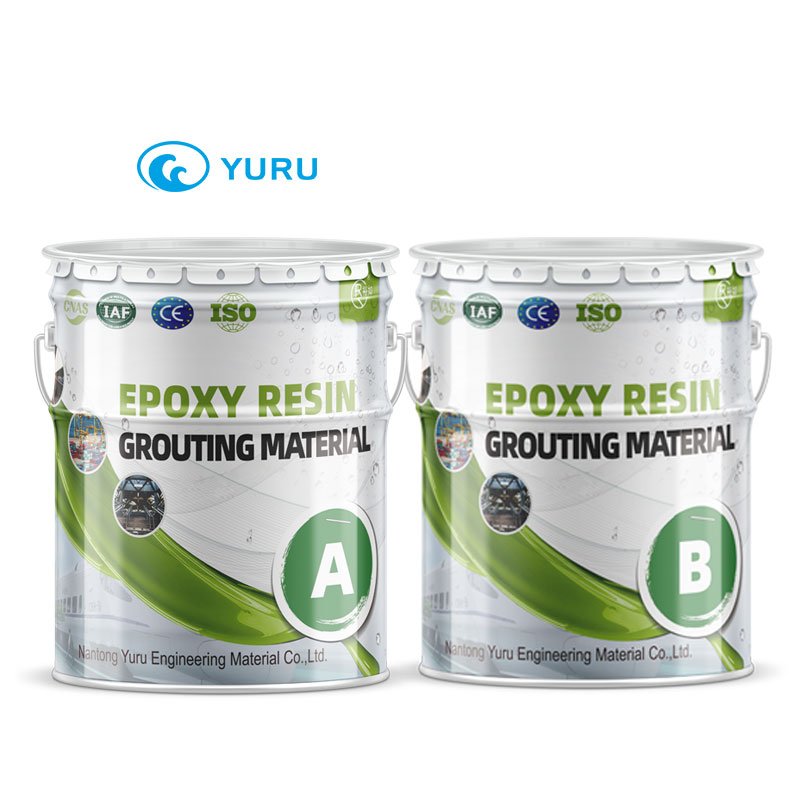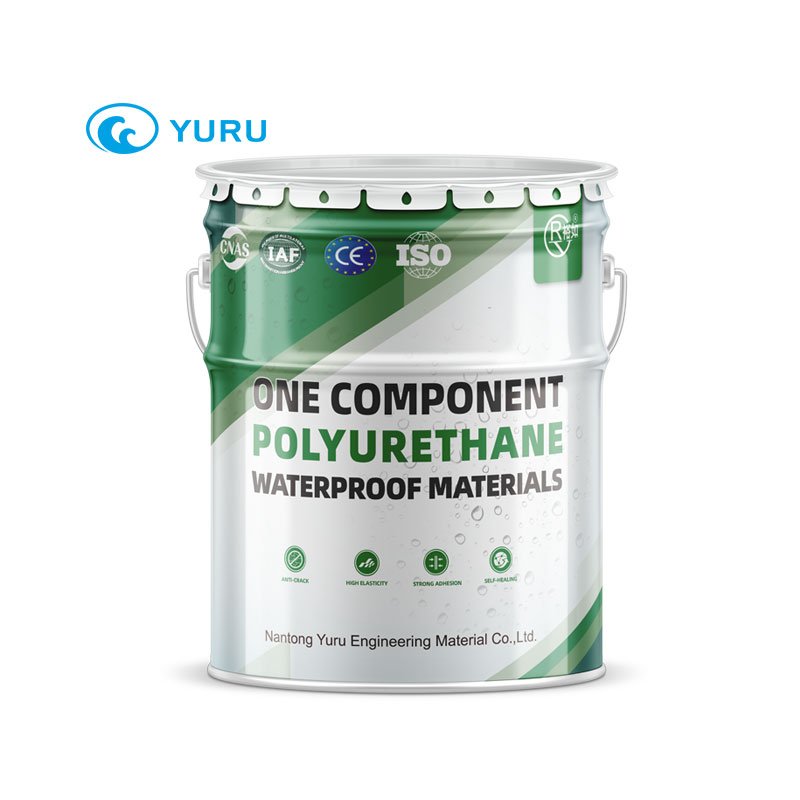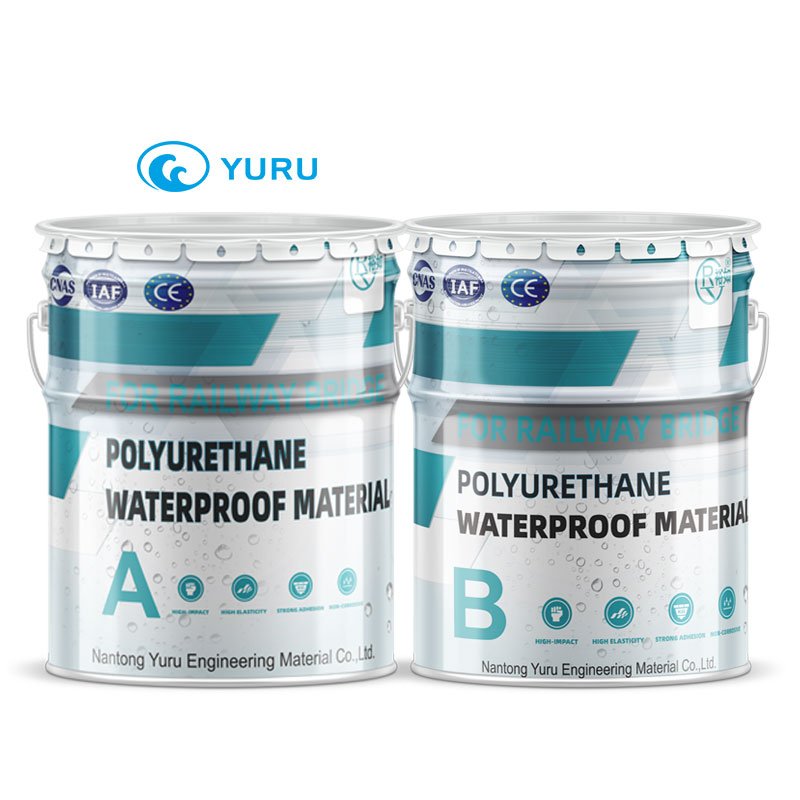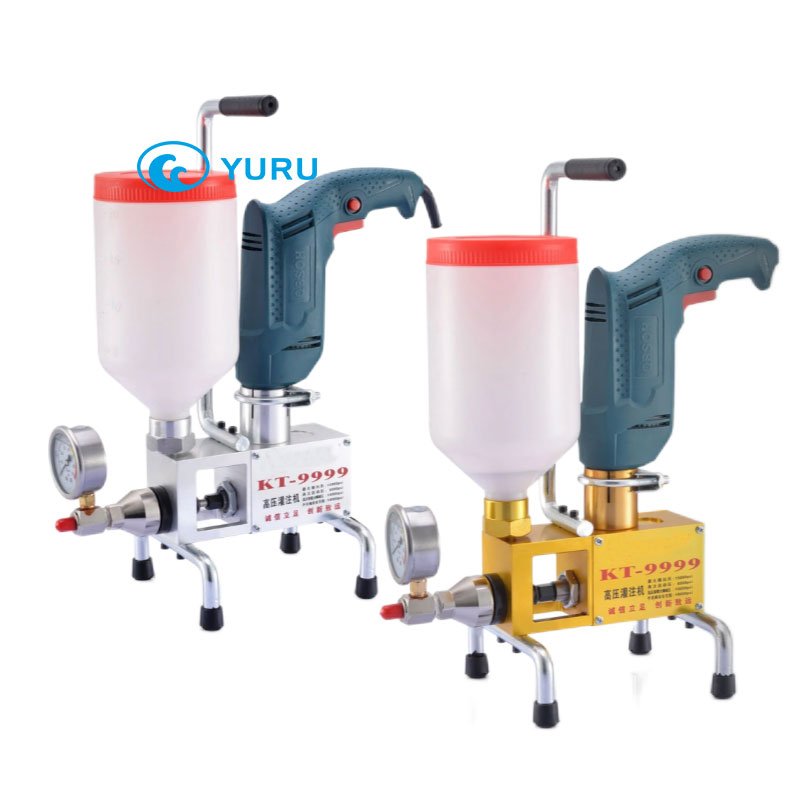Comparing Hydrophilic and Hydrophobic Polyurethane Grouting Materials
Introduction to Polyurethane Grouting Technology
Polyurethane grouting is a high-performance waterproofing and repair technique widely used in modern construction and infrastructure maintenance. The process involves injecting reactive polyurethane resin into cracks, joints, or voids in concrete or soil. Upon contact with water or moisture, the resin expands and hardens to create a durable, watertight barrier.
This technology plays a crucial role in addressing issues such as water infiltration, crack sealing, soil stabilization, and structural reinforcement in civil and underground engineering. Depending on the site conditions and project objectives, polyurethane grouting materials are typically divided into two main types: hydrophilic and hydrophobic systems.
Although both serve similar functions—sealing cracks and preventing leakage—their chemical properties, reaction behaviors, and ideal application conditions are fundamentally different. Understanding these distinctions is key for engineers, contractors, and material procurement managers seeking long-lasting waterproofing performance.


What Is Hydrophilic Polyurethane Grouting?
Hydrophilic polyurethane grouting materials are designed to react actively with water. When the liquid resin encounters moisture, it forms a flexible and expansive foam or gel capable of filling even the smallest voids or microcracks in concrete structures.
Key Features:
- Water-reactive chemistry: The material absorbs water during the reaction, forming a flexible, structure that remains elastic after curing.
- Low viscosity and high permeability: Enables deep penetration into fine cracks and porous substrates.
- Durable elasticity: The cured foam can accommodate minor structural movement and thermal expansion.
- Excellent adhesion: Strong bonding to concrete, rock, and other mineral surfaces ensures long-term sealing.
- Environmentally friendly: Water-based, solvent-free formulation with low VOC emissions.
Typical Applications:
- Sealing leaking basements and retaining walls
- Tunnels, subways, and underpasses exposed to continuous groundwater pressure
- Water tanks, reservoirs, and wastewater treatment plants
- Construction joints and cold joints prone to seepage
Limitations:
Hydrophilic polyurethane grouting is highly effective in moist or leaking environments, but may shrink slightly in completely dry conditions over time. Therefore, it is less suitable for permanently dry cracks or areas with no water exposure.
What Is Hydrophobic Polyurethane Grouting?
Hydrophobic polyurethane grouting materials are characterized by their water-repellent nature. Instead of reacting with water to expand, these systems are designed to maintain their structural integrity in dry or low-moisture environments. When cured, they form a dense, closed-cell foam that is highly resistant to compression and water absorption.
Key Features:
- Water-resistant reaction: The material resists water and forms a non-porous structure.
- High-density foam formation: Produces a rigid, durable material with low shrinkage.
- Excellent chemical resistance: Performs well in aggressive environments with acids, oils, or salts.
- Long-term stability: Ideal for permanent structural waterproofing and reinforcement.
- High mechanical strength: Withstands heavy loads and structural.
Typical Applications:
- Dry crack sealing in concrete walls, floors, and slabs
- Soil stabilization and void filling under foundations
- Bridge decks, culverts, and dry tunnels
- Industrial structures and containment areas
Limitations:
Hydrophobic polyurethane grouting requires dry or semi-dry conditions to react optimally. In active leaks or saturated environments, its performance may decline due to insufficient reaction with water.
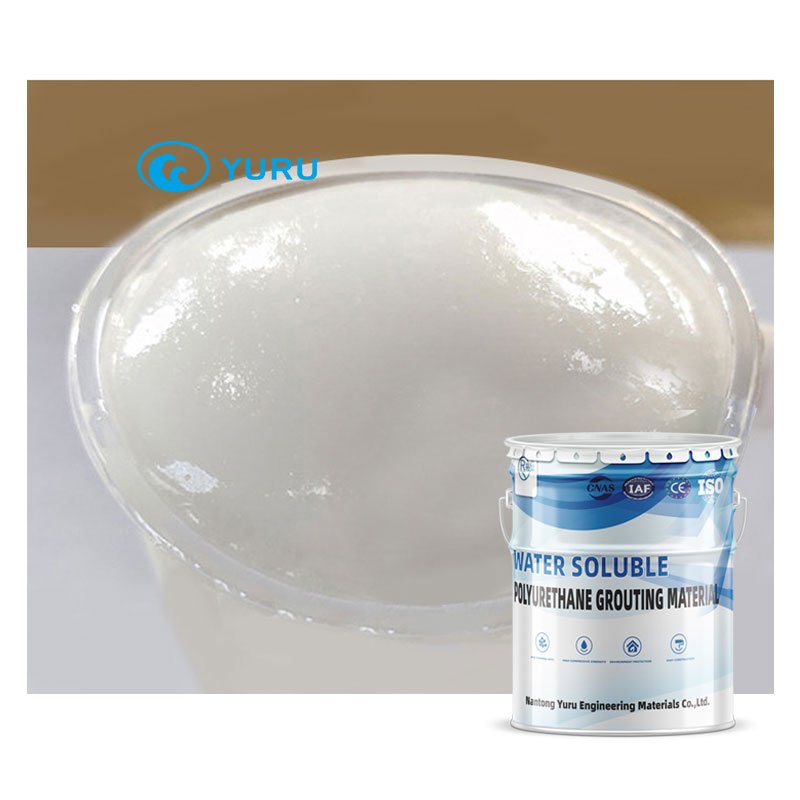
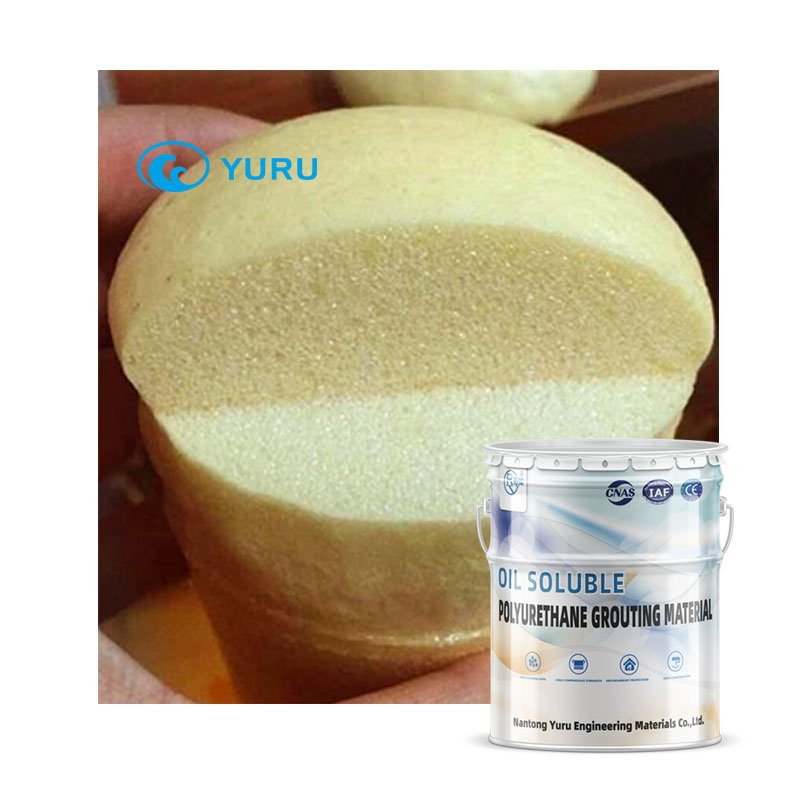
Key Differences Between Hydrophilic and Hydrophobic Systems
Although both types of polyurethane grouting materials provide waterproofing and sealing capabilities, their reaction mechanisms, foam structures, and ideal working conditions differ significantly.
| Property | Hydrophilic Polyurethane | Hydrophobic Polyurethane |
|---|---|---|
| Reaction Environment | Wet or leaking conditions | Dry or semi-dry conditions |
| Water Interaction | Absorbs and reacts with water | Repels water |
| Elasticity | High (adapts to movement) | Moderate (rigid and stable) |
| Adhesion Strength | Excellent to concrete | Good, less flexible |
| Chemical Resistance | Moderate | Excellent |
| Curing Speed | Fast | Moderate |
| Durability | Very good in wet environments | Outstanding in dry environments |
| Cost | Slightly lower | Slightly higher |
| Typical Applications | Underground, tunnels, basements | Foundations, bridges, dry cracks |
Summary:
- Hydrophilic polyurethane is best for dynamic waterproofing under wet conditions.
- Hydrophobic polyurethane excels in long-term sealing for dry, stable structures.
- Selecting between them depends on site moisture level, crack activity, and structural requirements.
Choosing the Right Material for Your Project
Selecting the correct polyurethane grouting material requires a clear understanding of project conditions and performance expectations. Below are key factors that determine the optimal choice:
Moisture Environment:
- For continuously wet or leaking environments → Choose Hydrophilic PU.
- For dry cracks or low-humidity areas → Choose Hydrophobic PU.
Structural Movement:
- For flexible structures (tunnels, basements) → Hydrophilic PU is preferable.
- For rigid structures (foundations, bridges) → Hydrophobic PU offers better strength.
Reaction and Curing Time:
- Fast response for emergency leak sealing → Hydrophilic PU.
- Controlled expansion for stable reinforcement → Hydrophobic PU.
Durability and Maintenance:
- Temporary or repair-focused sealing → Hydrophilic PU.
- Long-term waterproofing with minimal maintenance → Hydrophobic PU.
Environmental and Safety Requirements:
- Indoor or low-ventilation worksites → Water-based hydrophilic PU with low VOC.
- Heavy-duty industrial or chemical exposure → Hydrophobic PU for better resistance.
Professional consultation with an experienced supplier, such as YURU Waterproof, ensures accurate material selection and successful on-site application.


Environmental and Safety Considerations
Environmental performance and safety compliance are increasingly important in modern construction. Both hydrophilic and hydrophobic polyurethane grouting materials have evolved toward eco-friendly and low-emission formulations.
Hydrophilic Systems:
- Water-based, solvent-free, and nearly odorless.
- Ideal for confined spaces such as basements and tunnels.
- Comply with international standards like ISO 14001 for sustainable building materials.
Hydrophobic Systems:
- Some formulations may contain small amounts of organic solvent—ventilation is recommended during application.
- Long-term chemical stability minimizes environmental impact after curing.
YURU Waterproof ensures all grouting systems are formulated with low toxicity, low VOCs, and safe handling characteristics, making them suitable for both civil and industrial projects.
YURU Waterproof’s Polyurethane Grouting Material Solutions
As a trusted manufacturer and supplier in the waterproofing industry, YURU Waterproof provides a full portfolio of advanced grouting materials engineered for diverse construction challenges.
YURU’s Comprehensive Product Line:
- Water-Based Hydrophilic Polyurethane Grouting Materials – Ideal for active leaks and humid environments.
- Oil-Based Hydrophobic Polyurethane Grouting Materials – Designed for dry cracks and long-term sealing.
- Acrylate Grouting Materials – Low-viscosity systems for microcrack repair and curtain grouting.
- Epoxy Resin Grouting Systems – High-strength structural repair materials for load-bearing cracks.
- Polyurea Grouting Materials – Fast-curing systems with superior chemical resistance.
- Microcrystalline Polyurea Grouting Materials – High-density, pressure-resistant grouts for tunnels, subways, and bridges.
All YURU Waterproof products are ISO and CE certified and available for OEM/ODM customization, ensuring material performance tailored to your specific engineering requirements.
In addition, YURU provides:
- Technical consultation and project support
- Construction training
- After-sales technical service
Conclusion
Understanding the difference between hydrophilic and hydrophobic polyurethane grouting materials is essential for selecting the right waterproofing solution in modern construction.
Hydrophilic systems deliver exceptional results in moist or leaking environments, while hydrophobic types provide permanent sealing in dry and stable conditions. Together, they form the foundation of durable, flexible, and long-lasting waterproofing strategies.
With its comprehensive product portfolio and technical expertise, YURU Waterproof continues to support engineers, contractors, and distributors with reliable polyurethane grouting systems that meet global construction standards.
For project consultation, OEM services, or technical support, visit www.yuruwaterproof.com
or contact YURU Waterproof directly.
YURU Waterproof — Your trusted partner in advanced waterproofing and injection materials.


YURU Product solutions
Waterproof Coating
- One-component oil-based polyurethane waterproof coating
- One-component water-based polyurethane waterproof coating
- Two-component polyurethane waterproof coating
- Two-component 6.0Mpa polyurethane waterproof coating
- Transparent Waterproof Glue
- Nano Invisible Waterproof Agent
- Silicone Waterproof Coating
- Acrylic Waterproof Coating For Metal Roof
- JS Polymer Waterproof Coating
- High Elastic Liquid Rubber Waterproof Coating
- Cement-based Penetrating Crystallization Waterproof Coating


